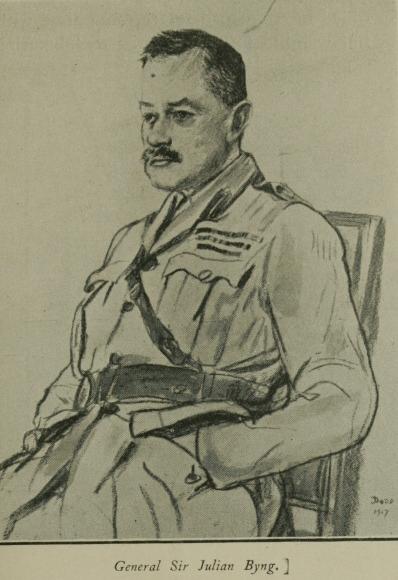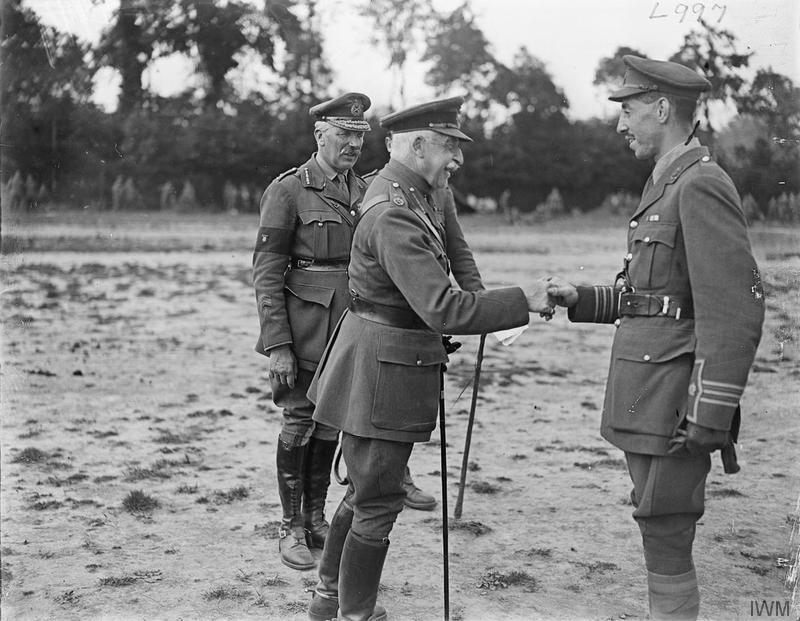|
Fontaine-Notre-Dame, Nord
Fontaine-Notre-Dame is a commune in the Nord department in northern France. Heraldry Fontaine-Notre-Dame in World War I Fontaine-Notre-Dame was the scene of intense fighting during the Battle of Cambrai in World War I. The battle started on 20 November 1917 when the British army made significant advances (4 miles) by virtue of its extensive use of tanks (300) for the first time. Fontaine-Notre-Dame was initially captured but, as the British advance stalled in the following days, soon lost due to "a vigorous ermancounterattack". General Julian Byng decided to make one more effort on 27 November to try to recapture Fontaine-Notre-Dame and the neighbouring Bourlon Wood, despite the reservations of divisional commander Major-General Fielding who described the idea as, "a dangerous and impracticable undertaking for which there could be no kind of justification." The attack commenced at 6.20 a.m. on 27 November 1917 with soldiers of the 3rd Battalion Grenadier Guards heading ... [...More Info...] [...Related Items...] OR: [Wikipedia] [Google] [Baidu] |
Communes Of France
The () is a level of administrative division in the French Republic. French are analogous to civil townships and incorporated municipalities in the United States and Canada, ' in Germany, ' in Italy, or ' in Spain. The United Kingdom's equivalent are civil parishes, although some areas, particularly urban areas, are unparished. are based on historical geographic communities or villages and are vested with significant powers to manage the populations and land of the geographic area covered. The are the fourth-level administrative divisions of France. vary widely in size and area, from large sprawling cities with millions of inhabitants like Paris, to small hamlets with only a handful of inhabitants. typically are based on pre-existing villages and facilitate local governance. All have names, but not all named geographic areas or groups of people residing together are ( or ), the difference residing in the lack of administrative powers. Except for the municipal arrondi ... [...More Info...] [...Related Items...] OR: [Wikipedia] [Google] [Baidu] |
Communauté D'agglomération De Cambrai
Communauté d'agglomération de Cambrai is the ''communauté d'agglomération'', an Communes of France#Intercommunality, intercommunal structure, centred on the Communes of France, city of Cambrai. It is located in the Nord (French department), Nord departments of France, department, in the Hauts-de-France regions of France, region, northern France. Created in 2017, its seat is in Cambrai.CA de Cambrai (N° SIREN : 200068500) BANATIC, accessed 8 October 2022. Its area is 411.3 km2. Its population was 81,335 in 2019, of which 32,176 in Cambrai proper.Comparateur de territo ... [...More Info...] [...Related Items...] OR: [Wikipedia] [Google] [Baidu] |
Nord (French Department)
Nord (; officially french: département du Nord; pcd, départémint dech Nord; nl, Noorderdepartement, ) is a department in Hauts-de-France region, France bordering Belgium. It was created from the western halves of the historical counties of Flanders and Hainaut, and the Bishopric of Cambrai. The modern coat of arms was inherited from the County of Flanders. Nord is the country's most populous department. It had a population of 2,608,346 in 2019.Populations légales 2019: 59 Nord INSEE It also contains the metropolitan region of (the main city and the prefecture of the [...More Info...] [...Related Items...] OR: [Wikipedia] [Google] [Baidu] |
Departments Of France
In the administrative divisions of France, the department (french: département, ) is one of the three levels of government under the national level ("territorial collectivities"), between the administrative regions and the communes. Ninety-six departments are in metropolitan France, and five are overseas departments, which are also classified as overseas regions. Departments are further subdivided into 332 arrondissements, and these are divided into cantons. The last two levels of government have no autonomy; they are the basis of local organisation of police, fire departments and, sometimes, administration of elections. Each department is administered by an elected body called a departmental council ( ing. lur.. From 1800 to April 2015, these were called general councils ( ing. lur.. Each council has a president. Their main areas of responsibility include the management of a number of social and welfare allowances, of junior high school () buildings and technical staff, ... [...More Info...] [...Related Items...] OR: [Wikipedia] [Google] [Baidu] |
France
France (), officially the French Republic ( ), is a country primarily located in Western Europe. It also comprises of Overseas France, overseas regions and territories in the Americas and the Atlantic Ocean, Atlantic, Pacific Ocean, Pacific and Indian Oceans. Its Metropolitan France, metropolitan area extends from the Rhine to the Atlantic Ocean and from the Mediterranean Sea to the English Channel and the North Sea; overseas territories include French Guiana in South America, Saint Pierre and Miquelon in the North Atlantic, the French West Indies, and many islands in Oceania and the Indian Ocean. Due to its several coastal territories, France has the largest exclusive economic zone in the world. France borders Belgium, Luxembourg, Germany, Switzerland, Monaco, Italy, Andorra, and Spain in continental Europe, as well as the Kingdom of the Netherlands, Netherlands, Suriname, and Brazil in the Americas via its overseas territories in French Guiana and Saint Martin (island), ... [...More Info...] [...Related Items...] OR: [Wikipedia] [Google] [Baidu] |
Blazon
In heraldry and heraldic vexillology, a blazon is a formal description of a coat of arms, flag or similar emblem, from which the reader can reconstruct the appropriate image. The verb ''to blazon'' means to create such a description. The visual depiction of a coat of arms or flag has traditionally had considerable latitude in design, but a verbal blazon specifies the essentially distinctive elements. A coat of arms or flag is therefore primarily defined not by a picture but rather by the wording of its blazon (though in modern usage flags are often additionally and more precisely defined using geometrical specifications). ''Blazon'' is also the specialized language in which a blazon is written, and, as a verb, the act of writing such a description. ''Blazonry'' is the art, craft or practice of creating a blazon. The language employed in ''blazonry'' has its own vocabulary, grammar and syntax, which becomes essential for comprehension when blazoning a complex coat of arms. Ot ... [...More Info...] [...Related Items...] OR: [Wikipedia] [Google] [Baidu] |
Battle Of Cambrai (1917)
The Battle of Cambrai (Battle of Cambrai, 1917, First Battle of Cambrai and ''Schlacht von Cambrai'') was a British attack in the First World War, followed by the biggest German counter-attack against the British Expeditionary Force (BEF) since 1914. The town of Cambrai, in the département of Nord, in France, was an important supply centre for the German (known to the British as the Hindenburg Line) and capture of the town and the nearby Bourlon Ridge would threaten the rear of the German line to the north. Major General Henry Tudor, Commander, Royal Artillery (CRA), of the 9th (Scottish) Division, advocated the use of new artillery-infantry tactics on his sector of the front. During preparations, J. F. C. Fuller, a staff officer with the Tank Corps, looked for places to use tanks for raids. General Julian Byng, commander of the Third Army, decided to combine both plans. The French and British armies had used tanks en masse earlier in 1917, although to considerably less ef ... [...More Info...] [...Related Items...] OR: [Wikipedia] [Google] [Baidu] |
World War I
World War I (28 July 1914 11 November 1918), often abbreviated as WWI, was one of the deadliest global conflicts in history. Belligerents included much of Europe, the Russian Empire, the United States, and the Ottoman Empire, with fighting occurring throughout Europe, the Middle East, Africa, the Pacific, and parts of Asia. An estimated 9 million soldiers were killed in combat, plus another 23 million wounded, while 5 million civilians died as a result of military action, hunger, and disease. Millions more died in genocides within the Ottoman Empire and in the 1918 influenza pandemic, which was exacerbated by the movement of combatants during the war. Prior to 1914, the European great powers were divided between the Triple Entente (comprising France, Russia, and Britain) and the Triple Alliance (containing Germany, Austria-Hungary, and Italy). Tensions in the Balkans came to a head on 28 June 1914, following the assassination of Archduke Franz Ferdin ... [...More Info...] [...Related Items...] OR: [Wikipedia] [Google] [Baidu] |
Fontaine-Notre-Dame Square Du 27 Novembre 1917 , a commune in the department of Nord in France
{{Geodis ...
Fontaine-Notre-Dame may refer to: * Fontaine-Notre-Dame, Aisne, a commune in the department of Aisne in France * Fontaine-Notre-Dame, Nord Fontaine-Notre-Dame is a commune in the Nord department in northern France. Heraldry Fontaine-Notre-Dame in World War I Fontaine-Notre-Dame was the scene of intense fighting during the Battle of Cambrai in World War I. The battle started on ... [...More Info...] [...Related Items...] OR: [Wikipedia] [Google] [Baidu] |
Julian Byng, 1st Viscount Byng Of Vimy
Field Marshal Julian Hedworth George Byng, 1st Viscount Byng of Vimy, (11 September 1862 – 6 June 1935) was a British Army officer who served as Governor General of Canada, the 12th since the Canadian Confederation. Known to friends as "Bungo", Byng was born to a noble family at Wrotham Park in Hertfordshire, England and educated at Eton College, along with his brothers. Upon graduation, he received a commission as a militia officer and saw service in Egypt and Sudan before enrolling in the Staff College at Camberley. There, he befriended individuals who would be his contemporaries when he attained senior rank in France. Following distinguished service during the First World War—specifically, with the British Expeditionary Force in France, in the Battle of Gallipoli, as commander of the Canadian Corps at Vimy Ridge, and as commander of the British Third Army—Byng was elevated to the peerage in 1919. In 1921, King George V, on the recommendation of Prime Minister David ... [...More Info...] [...Related Items...] OR: [Wikipedia] [Google] [Baidu] |
Geoffrey Feilding
Major General Sir Geoffrey Percy Thynne Feilding, (21 September 1866 – 21 October 1932) was a senior British Army officer who served as Major-General commanding the Brigade of Guards and General Officer Commanding London District from 1918 to 1920. Military career Feilding was commissioned into the Coldstream Guards in April 1888, promoted to lieutenant on 27 November 1890, and to captain on 6 April 1898. He served in the early part of the Second Boer War from 1899 to 1900 and was present in the engagements at Belmont in November 1899, being mentioned in despatches twice, and received the Distinguished Service Order (DSO). He returned to South Africa in 1902 commanding a battalion of mounted infantry and was granted the local rank of major on 20 April 1902. Following the end of the war in June 1902, he returned to the United Kingdom on board the SS ''Ortona'', which arrived in Southampton in September that year. Fielding later served in the First World War, being menti ... [...More Info...] [...Related Items...] OR: [Wikipedia] [Google] [Baidu] |
Queen Elizabeth The Queen Mother
Elizabeth Angela Marguerite Bowes-Lyon (4 August 1900 – 30 March 2002) was Queen of the United Kingdom and the Dominions of the British Commonwealth from 11 December 1936 to 6 February 1952 as the wife of King George VI. She was the last Empress of India from her husband's accession 1936 until the British Raj was dissolved in August 1947. After her husband died, she was known as Queen Elizabeth The Queen Mother, to avoid confusion with her daughter, Queen Elizabeth II. Born into a family of British nobility, Elizabeth came to prominence in 1923 when she married the Duke of York, the second son of King George V and Queen Mary. The couple and their daughters Elizabeth and Margaret embodied traditional ideas of family and public service. The Duchess undertook a variety of public engagements and became known for her consistently cheerful countenance. In 1936, Elizabeth's husband unexpectedly became king when his older brother, Edward VIII, abdicated in ... [...More Info...] [...Related Items...] OR: [Wikipedia] [Google] [Baidu] |




.jpg)